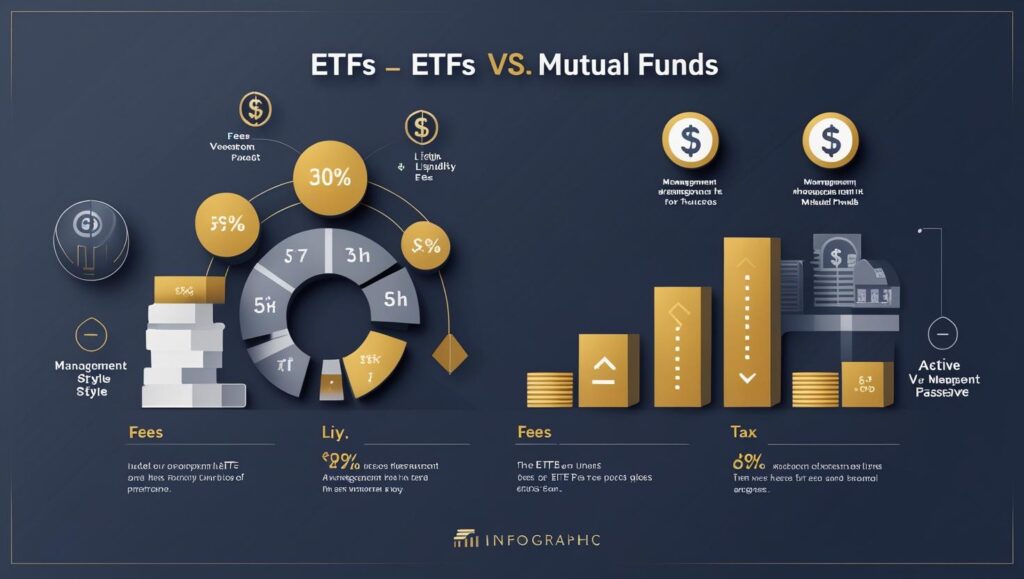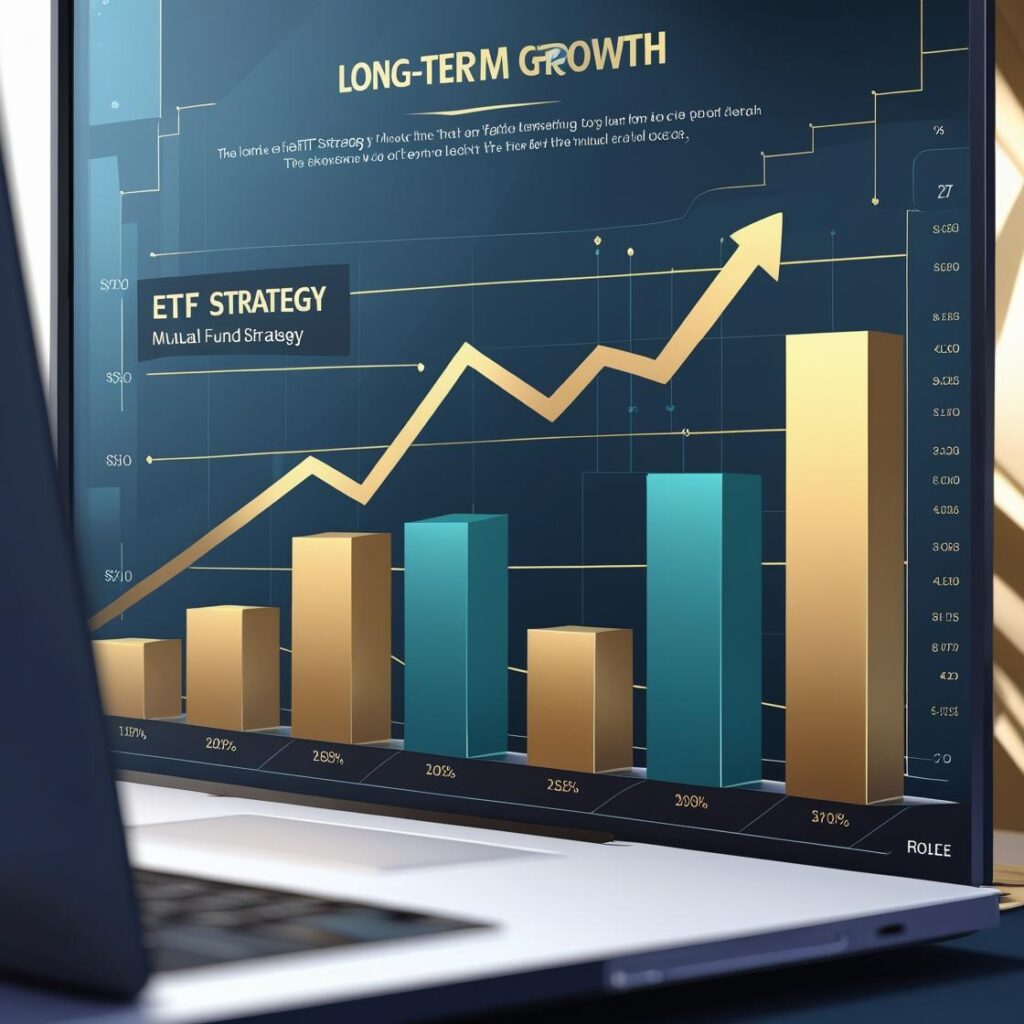ETF vs. Mutual Funds: What’s the Best Investment for Long-Term Investors?

ETF vs. Mutual Funds: What’s the Best Investment for Long-Term Investors?
Published July in 2025 | investments

When it comes to building wealth, investing is a key component, but choosing the right type of investment can be challenging for those looking to build savings over time. Two of the most debated investment options are Exchange-Traded Funds (ETFs) and Mutual Funds. Each has distinct features, as well as pros and cons that can dramatically impact long-term investment results. Understanding these differences is crucial for investors who want steady, sustainable growth.
In the comprehensive guide below, we’ll detail the aspects of ETFs and mutual funds to help you determine which is better for your long-term investment goals.
Table of Contents
- What is an ETF?
- What are Mutual Funds?
- ETF vs. Mutual Fund
- Pros and Cons of ETFs
- Pros and Cons of Mutual Funds
- Comparison Table: ETFs vs. Mutual Funds
- What’s Better for Long-Term Investors?
- Key Conclusions
- Additional Reading Suggestions
What is an ETF?
An ETF, or Exchange-Traded Fund, is an investment fund traded on stock exchanges like individual stocks. ETFs generally hold a diversified set of assets—typically stocks, bonds, or commodities—and often aim to replicate the returns of a particular market index, such as the S&P 500. They provide exposure to broad market segments or specific sectors and industries at a relatively low cost. Think of ETFs as products offering the trading flexibility of stocks along with the built-in diversification found in most mutual funds.
What are Mutual Funds?
A mutual fund pools money from individual investors, businesses, and other organizations, then invests it through managers working for the company managing the fund. Mutual funds, like ETFs, are valued once per day at market close based on their Net Asset Value (NAV). These funds can be actively managed by a fund manager (who selects investments) or passively managed (tracking an index). They offer an easy way to diversify investments and get professional management without extensive market expertise.
ETF vs. Mutual Fund
Cost Efficiency
Costs are among the most significant contrasts between ETFs and mutual funds. ETFs typically have lower expense ratios since they usually track indexes and do not require active management. Mutual funds, particularly actively managed ones, often have higher fees because fund managers must be compensated for their services.
Liquidity and Trading
ETFs offer high liquidity, allowing investors to buy and sell throughout the day at fluctuating prices. Mutual funds, on the other hand, can only be traded at the end of the trading day, making them less liquid moment-to-moment.
Management Style
There are both active and passive mutual funds. Actively managed funds strive to outperform the market, whereas ETFs are generally passive, aiming to mirror market indices and provide more stable returns.
Tax Efficiency
ETFs are generally more tax-efficient than mutual funds due to their unique creation and redemption process, resulting in fewer taxable capital gains distributions.
Minimum Investment
Usually, there’s a minimum required to purchase mutual funds. ETFs, on the other hand, have no minimums beyond the share price, making them accessible to a broader range of investors.
Pros and Cons of ETFs

Pros:
- Lower expense ratios and transaction costs, which help investors maximize their returns over time.
- Greater liquidity and trading flexibility, making it easier to adjust positions rapidly.
- Superior tax efficiency, reducing the annual tax burden and potentially improving net returns.
- Accessible without minimum investment, ideal for new investors or those with limited capital.
- Transparency of holdings since ETF portfolios are disclosed daily, giving investors clear insights into their investments.
Cons:
- Potential trading commissions (though increasingly rare), especially if frequently trading ETFs.
- Price fluctuations throughout the day, which might increase the risk for less experienced investors.
- Not suitable for trading without investor understanding, requiring some financial literacy to maximize benefits.
Pros and Cons of Mutual Funds
Pros:
- Professionally managed with potential for higher returns (active), especially beneficial for those lacking time or expertise.
- Automatic reinvestment of dividends and gains, making it easier for investors to compound growth effortlessly.
- Easy diversification in one investment, suitable for investors looking for simplicity and reduced risk.
- Variety of options available across sectors, strategies, and asset classes, providing investors with extensive choice.
Cons:
- Higher expense ratios and fees, which may erode overall returns, especially over extended periods.
- Limited liquidity: trading only at day’s end, making immediate adjustments to portfolios impossible.
- Potentially higher tax consequences due to capital gains distributions, impacting net returns negatively.
- Less transparency, as fund holdings are typically disclosed quarterly or semi-annually, limiting investors’ real-time insight into their investments.
Comparison Table: ETFs vs. Mutual Funds
| Feature | ETFs | Mutual Funds |
|---|---|---|
| Expense Ratios | Typically Lower | Usually Higher |
| Liquidity | High (intraday pricing) | Low (end-of-day pricing) |
| Management Style | Mostly Passive | Passive or Active |
| Tax Efficiency | Higher | Lower |
| Minimum Investment | None beyond share price | Often Required |
| Trading Flexibility | High | Limited |
So, Which is Better for the Long-Term Investor?
The superior choice between ETFs and mutual funds boils down to personal goals, risk tolerance, and investment preferences. ETFs are much more advantageous for investors who value low costs, tax efficiency, and flexibility. Investors who prefer the discipline of professional management and are willing to pay higher costs for potentially better-performing funds often choose mutual funds.
Key Conclusions
- ETFs are typically cheaper, more tax-efficient, and offer greater flexibility.
- Professional management and easy reinvestment are attractive features of mutual funds.
- However, ETFs are generally more appropriate for long-term investors seeking steady growth.
- Mutual funds might make sense for investors willing to pay more for potentially superior performance.
Investors seeking steady long-term growth would do well to weigh the pros and cons of ETFs vs. mutual funds and choose according to their financial objectives.
Additional Reading Suggestions
Top Long-Term Investment Strategies for Millennials
